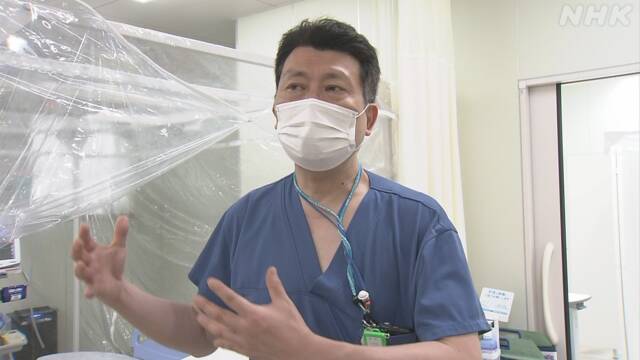Doctors who provide relief at the Tokyo Olympics and Paralympics are faced with a difficult response to heat stroke, which has symptoms similar to those of the new coronavirus, while paying attention to infection prevention.
At "Tokyo Hikifune Hospital" in Sumida Ward, Tokyo, in addition to regular medical care, we are accepting inpatients of the new Corona, dealing with fever outpatients, and vaccination, including Dr. Kunihisa Miura, who is the deputy director, 8 in total Doctors and nurses will help rescue the Tokyo Games by returning on holidays.
Dr. Miura and others are in charge of caring for the staff and volunteers who manage boats, canoes, and equestrian in the area around "Uminomori Park" in Koto Ward, although there are no spectators.
Dr. Miura, who participated in the on-site inspection on the 11th of this month, found that in addition to the boat venue, which is about 2 km away, the cross-country venue where equestrian is performed has a large area and the situation can only be grasped wirelessly. It was.
Dr. Miura said, "I felt that the sick and injured had to travel a long distance, and the reflection from the sea was strong, making it one of the stadiums where heat stroke is likely to occur."
In addition, heat stroke and the new corona have many similar symptoms such as fever and malaise, and it is said that it is difficult to distinguish them.
In the conventional response to heat stroke, the heat was lowered by spraying water with a mist and blowing the wind of a large electric fan to vaporize the water, but considering the suspicion of infection with corona, flying etc. will spread. I don't use a fan to keep it down.
After that, an antigen test is performed in a negative pressure tent and ice or a chilled futon is used to lower the body temperature.
Dr. Miura said, "If you have a fever, first suspect Corona and deal with it in a negative pressure tent. I think there is no choice but to do it. "

